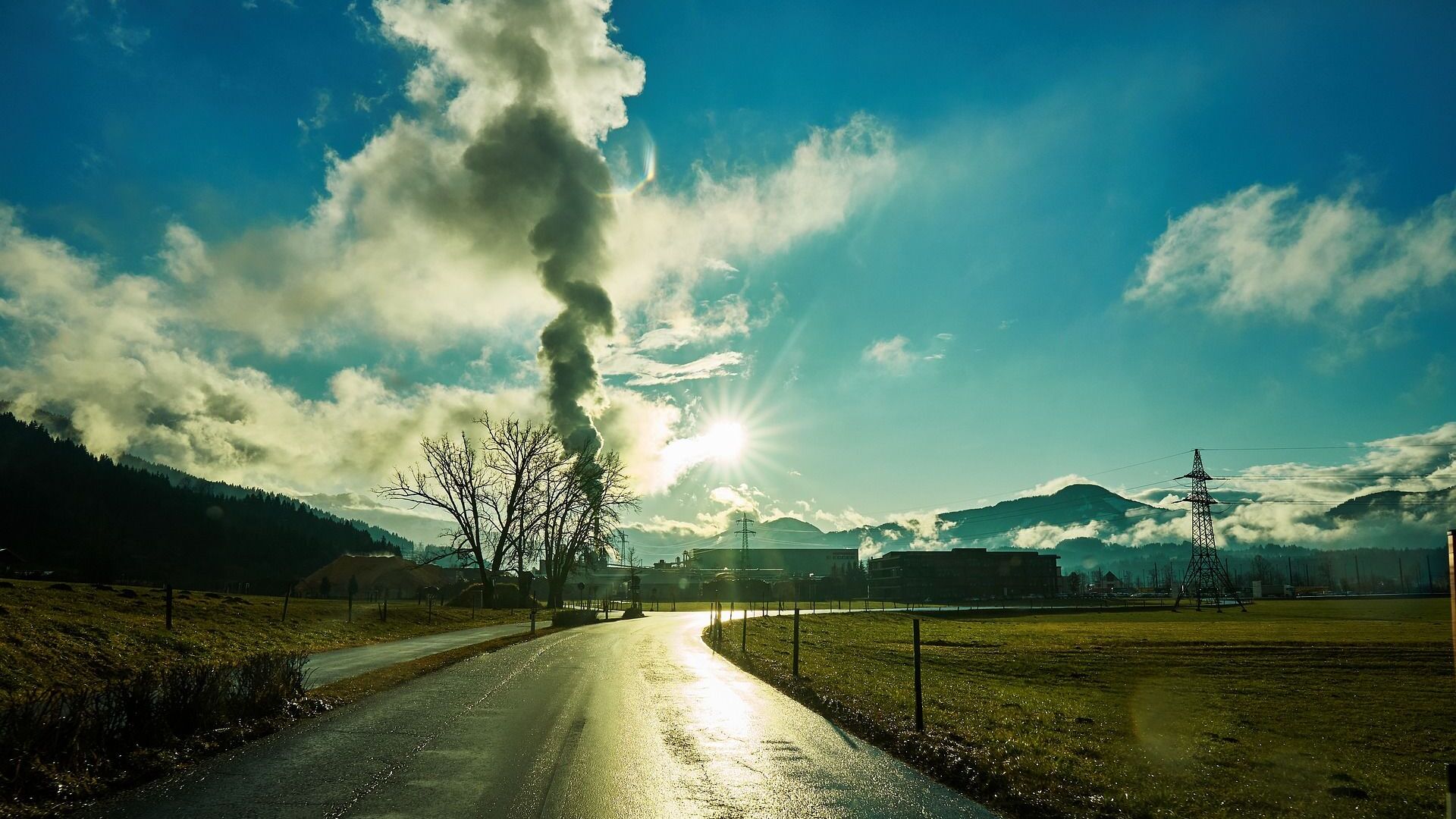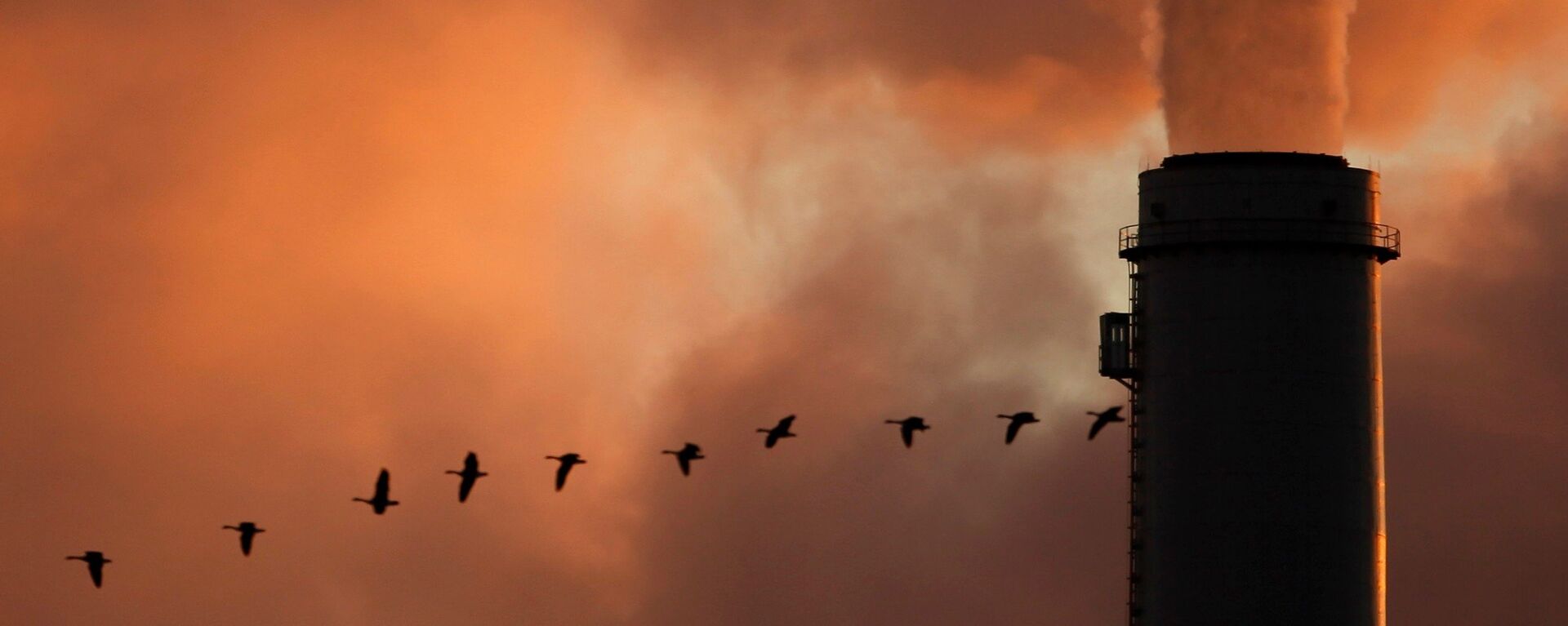https://sputnikglobe.com/20230814/new-study-finds-connection-between-ultrafine-particle-pollution-dementia-1112590991.html
New Study Finds Connection Between Ultrafine Particle Pollution, Dementia
New Study Finds Connection Between Ultrafine Particle Pollution, Dementia
Sputnik International
Scientists are warning that exposure to a certain type of pollution is a likely factor in whether a person develops dementia later in life, thanks to a new study.
2023-08-14T17:53+0000
2023-08-14T17:53+0000
2023-08-14T18:42+0000
beyond politics
dementia
pollution
air pollution
wildfire
industry
us
https://cdn1.img.sputnikglobe.com/img/07e4/0c/10/1081480340_0:40:1920:1120_1920x0_80_0_0_8056f16b5fe7bf8afd3b9e642f23f29e.jpg
Led by a group of researchers at the University of Michigan, the study was published on Monday in JAMA Internal Medicine, a peer-reviewed publication by the American Medical Association that was once titled Archives of Internal Medicine.The study did not elaborate on how the dementia manifested itself, as dementia is a generic term for a number of neurocognitive degenerations associated with old age, such as Alzheimer’s disease, Parkinson’s disease, and Huntington’s disease, among others. More than 55 million people around the world have dementia, with another 10 million developing it each year, according to the World Health Organization (WHO).The pollution with which it was correlated was a type of fine and ultrafine particles smaller than 2.5 micrometers in diameter, called PM2.5. At such a tiny size, these particles “can penetrate deeply into the lung, irritate and corrode the alveolar wall, and consequently impair lung function,” according to a 2016 study.In the University of Michigan study, the “strongest associations” with increased dementia occurrence was PM2.5 pollution from agriculture, traffic, coal combustion, and wildfires.Boya Zhang, a study co-author and University of Michigan research fellow who focuses on the effects of air pollution on cardiopulmonary disease and cognitive aging, said that the study “suggests that particulate matter air pollution from agriculture and wildfires might be more neurotoxic compared with other sources. However, more research is needed to confirm these effects, especially for these two sources which have received less attention in prior research.”The study comes during a year of dramatically increased wildfire activity as well as persistent “heat domes” of stagnant air that have spread across wide areas of the northern hemisphere during the summer of 2023. While the heat domes can make temperatures skyrocket and encourage wildfires to break out, the stagnant higher layers of air can block lower air from rising, trapping pollution close to the surface.Wildfires raging in Canada, Italy, Greece, and elsewhere have poured smoke into the skies, tainting the air for thousands of miles downwind as the smoke and fine particulate matter spreads around the world. In Canada alone, the fires have been so severe as to have already accounted for more carbon output than the northerly nation’s entire annual output last year, and reached 25% of global carbon pollution by itself.
https://sputnikglobe.com/20230419/over-one-third-of-americans-live-with-life-shortening-levels-of-air-pollution-1109669375.html
https://sputnikglobe.com/20230811/ai-powered-smart-socks-give-hope-to-dementia-patients-1112529205.html
Sputnik International
feedback@sputniknews.com
+74956456601
MIA „Rossiya Segodnya“
2023
News
en_EN
Sputnik International
feedback@sputniknews.com
+74956456601
MIA „Rossiya Segodnya“
Sputnik International
feedback@sputniknews.com
+74956456601
MIA „Rossiya Segodnya“
dementia; particle pollution; pm2.5, hawaii wildfires
dementia; particle pollution; pm2.5, hawaii wildfires
New Study Finds Connection Between Ultrafine Particle Pollution, Dementia
17:53 GMT 14.08.2023 (Updated: 18:42 GMT 14.08.2023) Scientists are warning that exposure to a certain type of pollution is a likely factor in whether a person develops dementia later in life, thanks to a new study.
Led by a group of researchers at the University of Michigan, the study was
published on Monday in JAMA Internal Medicine, a peer-reviewed publication by the American Medical Association that was once titled Archives of Internal Medicine.
The study looked at data from 27,857 people from between 1998 and 2016, of whom about 15% developed dementia during that time. Of those who developed dementia, all lived in areas of the US with higher concentrations of particle pollution than those who didn’t develop dementia.
The study did not elaborate on how the dementia manifested itself, as dementia is a generic term for a number of neurocognitive degenerations associated with old age, such as Alzheimer’s disease, Parkinson’s disease, and Huntington’s disease, among others. More than 55 million people around the world have dementia, with another 10 million developing it each year,
according to the World Health Organization (WHO).
The pollution with which it was correlated was a type of fine and ultrafine particles smaller than 2.5 micrometers in diameter, called PM2.5. At such a tiny size, these particles “can penetrate deeply into the lung, irritate and corrode the alveolar wall, and consequently impair lung function,” according to
a 2016 study.
In the University of Michigan study, the “strongest associations” with increased dementia occurrence was PM2.5 pollution from agriculture, traffic, coal combustion, and wildfires.
“Our findings indicate that lowering levels of particulate matter air pollution, even in a relatively clean country like the United States, may reduce the number of people developing dementia in late life,” said Sara Dubowsky Adar, associate chair of epidemiology at the University of Michigan School of Public Health and lead author of the study.
Boya Zhang, a study co-author and University of Michigan research fellow who focuses on the effects of air pollution on cardiopulmonary disease and cognitive aging, said that the study “suggests that particulate matter air pollution from agriculture and wildfires might be more neurotoxic compared with other sources. However, more research is needed to confirm these effects, especially for these two sources which have received less attention in prior research.”

11 August 2023, 10:46 GMT
“Given that the development of dementia could take a long time, this study mainly aimed to provide evidence for policymakers to reduce exposures to these sources of emissions,” she added.
The study comes during a year of dramatically increased wildfire activity as well as persistent “heat domes” of stagnant air that have spread across wide areas of the northern hemisphere during the summer of 2023. While the heat domes can make temperatures skyrocket and encourage
wildfires to break out, the stagnant higher layers of air can block lower air from rising, trapping pollution close to the surface.
Wildfires raging in Canada, Italy, Greece, and elsewhere have poured smoke into the skies, tainting the air for thousands of miles downwind as the smoke and fine particulate matter spreads around the world. In Canada alone, the fires
have been so severe as to have already accounted for more carbon output than the northerly nation’s entire annual output last year, and reached 25% of global carbon pollution by itself.




